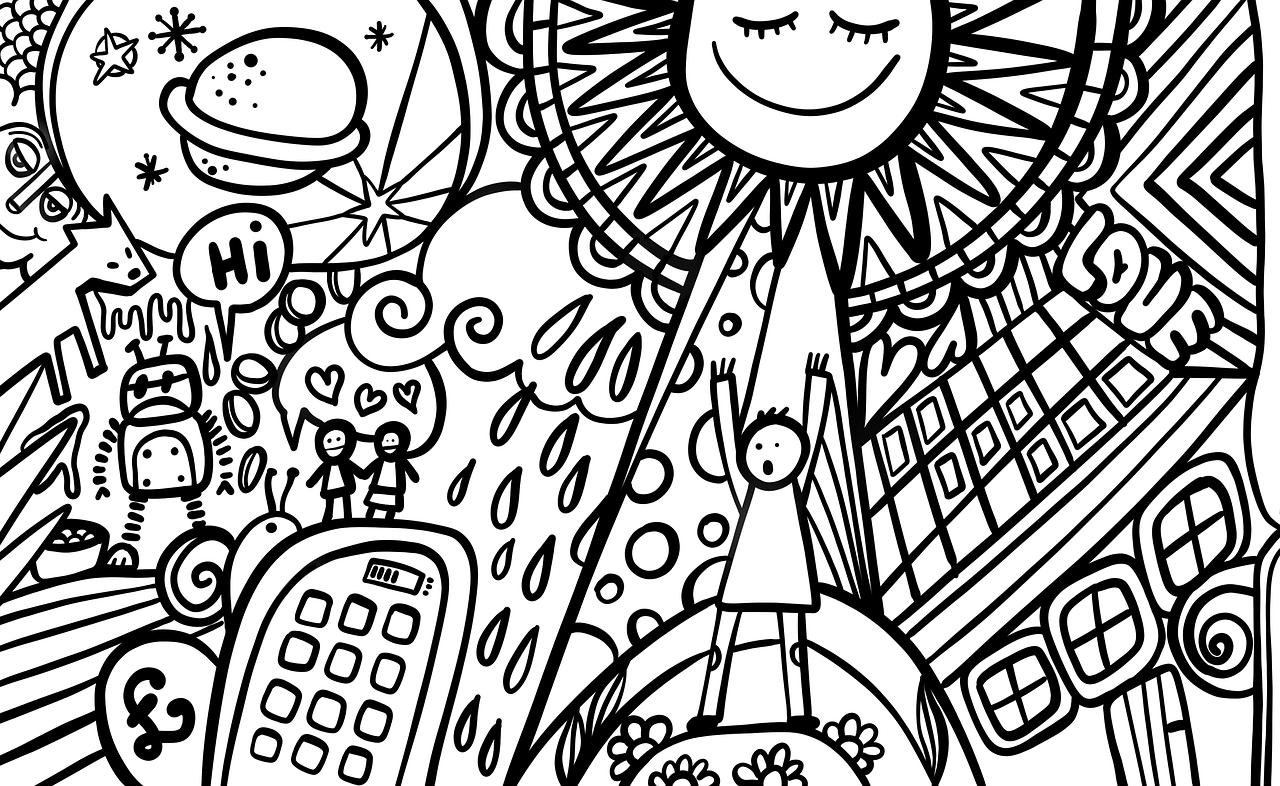Obedience Training Is Unfit For Children


5
By Genevieve Simperingham
The bully-victim relationship commonly plays out in homes, schools, workplaces, in politics, and between countries.
Who would want to train children to be obedient, when we can bring them up to be discerning, critical thinkers with a highly developed capacity for big-picture thinking, for empathy for self and others and to value integrity and what feels right above the directions of authority figures?
Children who are trained to be obedient are often too busy either trying to stay in the good books or feel too misunderstood and defensive to think things through clearly, including how their actions affect other people. Their motivation is to evade punishments rather than do what feels right. Authoritarian parenting conditions children to believe that they should do what they’re told whether they like it or not, whether it feels good or bad, and to not “talk back”.
It’s difficult for most adults to challenge authority figures if they weren’t allowed to challenge their own parent. Obedience training can lead to a susceptibility to being unduly influenced by peers or authority figures as children, adolescents and later as adults.
To have the courage to express our concerns and opinions in the face of authority or peer pressure, we need to be able to stay strong and overall at peace in ourselves. Most of us want this for our children, especially as they reach the teenage years!
To act from integrity and do what feels right despite pressure to conform to the norm or to authority, we need to be balanced and centered enough to make decisions based on considering the needs and feelings of others while also considering our own feelings and needs.
Shocking Research
In recent decades, there have been many interesting social studies exploring human behavior and what influences a person’s tendency to act ethically or responsibly or not. A famous groundbreaking study by Stanley Milgram, a Yale University psychologist in 1961 paved the way for many more, which have uncovered very similar results. When Milford asked university students to guess how many people would willingly comply if a person in a position of authority told them to deliver a 400-volt electrical shock to another person, they predicted that no more than 3% of participants would deliver the maximum shocks. In reality, 65% delivered the maximum shocks.
It’s difficult for most adults to challenge authority figures if they weren’t allowed to challenge their own parent.
6
During the experiment, each subject was asked to press a button that they believed delivered increasingly high voltage electric shocks to the “student” on the other side of the wall if they gave the wrong answer to the “teacher’s” questions. Many of the subjects, while believing that the “student” was actually receiving shocks and hearing their protests and cries for mercy, including complaints of a heart condition, became increasingly agitated and even angry at the experimenter. Yet 36 out of 40 people, in turn, continued to do what they were instructed to do all the way to the end. Even when the “student” became silent when apparently receiving shock from a switch labeled "danger: severe shock” the subject continued based on the instruction that silence is to be read as a wrong answer.

Milgram’s experiment has become a classic in psychology, demonstrating the dangers of obedience.
Ordinary people, simply doing their jobs, and without any particular hostility on their part, can become agents in a terrible destructive process. Moreover, even when the destructive effects of their work become patently clear, and they are asked to carry out actions incompatible with fundamental standards of morality, relatively few people have the resources needed to resist authority (Milgram, 1974).
Milgram’s experiments were inspired initially by the defense of the German Nazi, Adolph Eichmann, that he was simply following instructions when he ordered the deaths of millions of Jews at the post World War II trial.
More recently in the US, a hoax caller pretending to be a police officer requesting the manager’s cooperation with an apparent investigation of a staff member accused of stealing, managed to convince managers to strip search and humiliate their staff.
A teenage victim in response to why she complied despite her distress said: "My parents taught me when an adult tells you to do something that's what you do. You don't argue, you listen.” Her boss who conducted the strip search when interviewed said: “I’m thinking ‘okay I’m doing what I’m supposed to be doing here’”. She’s not alone in holding the unchallenged belief that following the instructions of an authority figure is a definition of “doing what I’m supposed to do”.

36 out of 40 people continued to do what they were instructed.
7
We are conditioning children to believe that this is what’s normal and acceptable.
Deeply Ingrained Conditioning
The first relationships create the template for future relationships However we treat our children, we are conditioning them to believe that this is what’s normal and acceptable in relationships. The above examples stand out as being particularly shocking, yet the bully-victim relationship commonly plays out in homes, schools, workplaces, in politics and between countries. Until the authoritarian punishment-based system is understood to be dysfunctional at best and often dangerous, it continues to be the elephant in the room as Individuals compete and blame each other.
People of all ages whose actions negatively impact another generally know that it doesn’t feel good, doesn’t feel right. It’s so hard for individuals, for parents at home with their children, to break away from this cycle, especially if it was the “normal” that they grew up in. Yet early childhood conditioning operates automatically unless we put a lot of hard work into exploring, re-evaluating and challenging the beliefs that no longer serve us.
Most parents would, of course, hope that their child will end up in stable healthy relationships with a partner and work colleagues who will talk things through respectfully in the face of the inevitable differences and challenges that they’ll face. The same parents would cringe to think that their child would grow up to be someone who would shout at, verbally abuse, stonewall or strategically manipulate or threaten their partner or employee.
If a parent regularly yells at a child, can they truly expect their child not to be an adult who tolerates such treatment by their partner or boss?

If a parent regularly yells at a child and puts them down, can they truly expect their child not to grow up to be an adult who tolerates being treated in such a way by their partner or boss, or who treats others in such a way? The adults who grew up in an authoritarian household are not only less likely to see that a relationship is dysfunctional and that they deserve better, but they tend to either fight back aggressively or submit rather than asserting clear boundaries. Whereas, the adult who grew up in a family where connection and respect was maintained even when conflicts and differences arose, will likely have more clarity that differences should be worked through as respectfully as possible.

“Peace cannot be kept by force. It can only be achieved by understanding.” ~ Albert Einstein.
We want our child to be open and honest, but can we cope with their honesty?
8
Modeling and Validating a Moral Compass
When I watched the Milgram experiment YouTube video with my son, he said, “Wow mum their totally not listening to their uncomfortable feelings in their body”. But for children to grow up listening to and following what feels comfortable or uncomfortable in their body, mind, and heart, this moral compass needs to be modeled and validated in the family.
Simply asking children “how does it feel to you?” and talking about what feels right or doesn’t feel right ourselves can only help. But overall our kids need to be not just allowed to protest and complain, but to have those feelings truly heard and valued. They need to be allowed to negotiate, encouraged to problem solve and invited into decision making in matters that affect them.
Our responses to our children can lift them up or put them down, empower or disempower them. We need to be very mindful of how we guide and lead them. Through consistently showing care and consideration for their feelings and needs, we can help them grow up to be adults who have a very strong and clear knowledge that they and others deserve to be treated with empathy and respect.
It takes a LOT more skill to be mindful of our stress levels and our tone of voice, to find ways to reduce and resolve our anger and consistently return to a centered enough state to genuinely listen and work through communication respectfully. It's much easier, at least in a stressful moment, to intimidate our child or teen into doing what they’re told, but boy are their unhealthy repercussions for the parent, child, the whole family, and indeed society in the long term.
How can we support our children to be resilient to the shaming and intimidation of those who have power over them?
Shame and Intimidation
When my son was about nine, the relief teacher caught him working on a caricature drawing of the teacher with the words "I don't care about people's feelings, I only care about pizza" (she'd previously confessed to being a big fan of fast food, especially pizza). This happened just after a pretty dramatic incident where the teacher loudly shamed one of the girls for starting to cry during a game. When my son attempted to advocate for the girl, the teacher aggressively shut him down and shamed him for challenging her.
When standing outside the class being lectured by the teacher, my son was told that he should be ashamed of himself (yes I know!) and was asked: "What would your parents think about all this?”
Our responses to our children can lift them up or put them down, empower or disempower them.
9 “ “
My son said, "I know how unimpressed my parents would be with your lack of good communication skills."
So when my son was later telling us all about it, when he got to that bit my husband and I looked at each other and said, "That's an interesting question, what did you think that we would think?". My son said, "I thought, I know how unimpressed my parents would be with your lack of good communication skills" and I felt this big sense of relief. Yes, the whole thing was very stressful, but no, the teacher didn't manage to make him take the shame on. He maintained his sense of self and his clarity about how kids deserve to be treated.
He also knew that the teacher couldn't see what was so wrong about shaming a kid for crying because she must not have grown up in an environment where upsets ware treated respectfully.
Another similar but different experience that my daughter had when she was ten related to when a dance teacher shamed her for crying in a moment of being overwhelmed. My daughter is very laid back and easygoing and I tend to worry more about her ability to stand up for herself than my son who's naturally more extroverted and feisty. But in this instance, as the teacher was ordering her to “stop crying and making a fuss”, my daughter said through her tears, “I’m allowed to feel upset, I’m allowed to cry, I need to cry.” At which point the teacher stopped in her tracks, became silent and then calmly invited my daughter to tell her what was upsetting her.
Preserving Children’s Dignity and Integrity
We can't protect our children from unfairness and intimidation forever, from hurt people who hurt people, but we can support their healthy self-image, integrity and their right to be respected and heard. To me, the victory is when children have the resilience to internally protect themselves from the intimidation that an authority figure or peer is (perhaps unconsciously) working hard to transfer onto them. The child who can securely bring stressful instances home to vent and process to the extent that’s needed to get it all out of their system and have their feelings heard and accepted, is more likely to seek help rather than hide in fear if and when the really big stuff happens as children, teens or adults.
If parents dismissively say, "oh well that's life mate" or worse still side with the other person, then how could a child not be left in huge self-conflict? It's our listening, empathy, and understanding that gives our child the strong, caring holding that they need to offload their frustrations when they've been affected by difficult interactions with others
It’s all too easy in our busyness and haste to bombard our children with corrections, demands, criticism and to impose our solutions when things aren’t going so smoothly for them. Yet, with some creativity, learning, and patience, there’s much that we can do to preserve our child’s dignity and integrity while helping them develop great problem-solving skills.
10
It’s all too easy in our busyness and haste to bombard our children with corrections, demands, and criticism.
“
Instead of “look what you’ve done now,” we can say “it’s okay, let’s figure this out, any ideas?”


Instead of “stop fighting, you kids, you should know better than to act like that,” which will no doubt add to their already stressed state and cause them to feel blamed and misunderstood, we can say something like “hey kids, this looks stressful, can I help?” and support them to slow things down enough to take turns sharing their perspective, reflecting back what they each heard the other say and explore possible solutions together.
Let's open our hearts, minds and ears to what's going on for them, especially when they’re grumpy and out of balance. Let's help our child feel like a valued member of the family and of society with an important voice and gifts to share. When a child's free will is genuinely respected, the child is much more likely to use their free will wisely and with integrity.
Genevieve Simperingham
Genevieve is the proud mum to a 13 year-old daughter and 19 year-old son. Although she was lucky to have learned a lot about what's needed to foster secure attachment before becoming a parent, she's continued to learn on the job and through the privilege of working with hundreds of families. Her mission and passion is to bring peaceful parenting education and resources to as many families and organizations as possible.

11
One looks back with appreciation the brilliant teachers, but with gratitude to those who touch our human feeling. The curriculum is so much necessary raw material, but warmth is the vital element for the growing plant and for the soul of the child. - Carl



 Jung
Jung

12
How AI is Transforming Life at Home by Thinking of You
(BPT) - We all love the idea of having a washer, refrigerator or smart appliance that gives us important messages and guides our next steps.
But not all smart technology is alike. The last thing you want from your investment is a gimmicky gadget that does nothing more than turn your mobile device into a glorified remote control. So how do you identify the brands with game-changing technology that will be relevant and useful for years to come?
The most advanced smart home technology is equipped with artificial intelligence and allows for a great deal of helpful tools to make your everyday life easier.

AI and the vision of a more connected living experience were highlighted at the recent AI & Big Data Expo North America event in Silicon Valley, at which key speaker Samuel Chang, corporate vice president of LG's Silicon Valley Lab, discussed the company's innovations and its focus on improving quality of life. LG's vision is manifested in LG ThinQ(R), the AI technology embedded into each of the brand's smart products and solidified through three pillars guiding the company's artificial intelligence aspirations: Evolve, Connect, Open. These tenets outline LG's easy to use, proactive products and services that offer a connected experience through personalized and efficient AI for users with diverse needs and tech preferences in their homes.
The goal is always focused on elevating the quality of life at home and beyond, Chang said, "so users can live free and stay focused on what matters."
Here's a look at how this highly evolved smart technology equipped with AI is transforming how people are living.
* Easy, intuitive, effortless: Smart devices shouldn't be complicated, period. Along with operability that's practically self-evident and mistake-proof, well-designed AI should be smart enough to fit seamlessly with your existing smart home technology. So, if you have a favorite voice-assisted technology, your new AI-enabled appliance should be easily integrated into your system of choice.
* Personalized to your needs: One of the cornerstones of AI is learning, which means the more you use these smart devices, the better they operate for you. Because they use the data to learn your preferences and routine, they create a customized user experience that best meets the needs of you and your family.
13
* Responds proactively: The most intelligent smart devices on the market also alert you of issues before they turn into full-fledged, costly problems. For example, ThinQ(R) on all LG devices is connected to the brand's exclusive customer support program, Proactive Customer Care, which provides useful tips to keep the appliance in good condition and sends timely alerts about potential problems. For example, users can receive tips on when to clean the drum of a washing machine and recommendations on which detergent is best for their clothing.
* Uses energy efficiently: Many users of intelligent devices appreciate saving energy. Not only do AIenabled products track energy usage, but some can also be programmed to maximize your energy conservation. For example, LG ThinQ(R) devices come with settings, such as Save Mode and Vacation Mode, that synthesize the analytics, sensors and usage data to maximize both your energy savings and pocket savings.
These individual benefits of AI intelligence - from learning your behaviors to proactive alerts and energy savings - come together to transform your daily life! This technology streamlines your routine, takes the guesswork out of everyday tasks, and frees up time for things you'd rather be doing.

ELDERBERRY AND BIRCH - NATURAL

https://humdakin.com

“Our beautiful packaging, our soft and clean scents, the gentle effect complete the essence of Humdakin. We want Humdakin to be a part of your home.”
Camilla Humdakin
14
ADVERTISE WITH US

Where You Can Find Us?
City & County of Dania, Florida
Doctor’s Offices
Dentist Offices
Dania & Wilton Manor Library
Boys & Girls Clubs
Local Farmers Markets
Restaurants/Cafes
15
How family game night can boost skills for kids


(BPT) - Feeling disconnected from members of your own family lately? You're not alone - a 2018 study by 72 Point for Visit Anaheim found that 60% of parents with kids between 4 and 18 described their daily lives as "hectic." The survey also found that today's families only spend about 37 minutes of quality time together per weekday. Between digital distractions and our often over-scheduled lives, even sitting down for dinner together can feel like a miracle to pull off, especially as children head toward the tween and teen years.
What's a solution? Gather around the table together for a good old-fashioned family game night. Even if you start out monthly, chances are it will soon be popular enough to enjoy more often. Putting your family's game night on the calendar will ensure everyone keeps their schedules clear for a night of fun - and connection - together.
Today's games provide a range of choices to suit any age, interests or gaming styles, so there's something for every family to explore and enjoy together. Kids can learn important lessons about sportsmanship and fair play, develop communication and collaboration skills, increase their fine motor, logic and strategic thinking abilities - and have a blast doing it.

Here are some examples of how games can boost specific skills, while also providing plenty of giggles and excitement.

16
1) Test your knowledge, quick thinking and creativity
A game that's always up-to-date, kNOW! uses the latest technology to help test the brain power of three to six players, ages 10 and up. Games go beyond trivia - there are also puzzles such as identifying a sound provided by Google Assistant, or creating a question to ask Google Assistant to prompt it to say a provided word or phrase. This fast-moving game provides constantly changing questions depending on where and when you play.





2) Enjoy the wicked side of strategy

For a fun twist on everyone's favorite movies, Disney Villainous: Evil Comes Prepared allows two to six players age 12 and up to choose a sinister character to play: Scar from "The Lion King," Ratigan from "The Great Mouse Detective," or Yzma from "The Emperor's New Groove." Players put strategy and logic to the test to achieve their own diabolical goals - and stop other villains from completing their own dastardly objectives. Games like Disney Villainous can be expanded and played with other characters in the series. Players can choose from a treasure trove of villains including Male Queen of Hearts, Ursula and more.
3) Create suspense while working cooperatively

JAWS brings the classic movie and infamous shark to life in your very own living room. In this asymmetric, two-act board game, one player takes the role of the shark while others take on the parts of Chief Brody, Quint and Hooper and work together to defeat their toothy foe. For two to four players ages 12 and up, JAWS recreates the excitement and tension of the blockbuster film.
4) Boost problem-solving and small motor skills
A brain-bending game for all generations, Invasion of the Cow Snatchers is an introduction to playing games at different levels of skill while challenging players as they learn how to follow directions and maneuver their flying saucer around obstacles. Though designed to be a one-player game, others can join in on the fun too by collaborating to solve puzzles and taking turns being the magnetic "UFO."
Schedule a family game night and turn that 37 minutes into an entire hour or more! Enjoy hanging out together, and reconnecting as a family.
For more games and puzzles to enjoy, visit Ravensburger.com.
17
1823 E Commerical Blvd Fort
Lauderdale, Fl 33308 954-EATBOWL 954-328-2695

Hours:
Monday - Saturday: 11am-9pm
Sunday: - Sunday: 12pm-8pm
https://eatbowlicious.com


FIT FOOD 18























 Jung
Jung









































 Pision Dart Frog
Pision Dart Frog



















































 By C. Alvarez
By C. Alvarez







